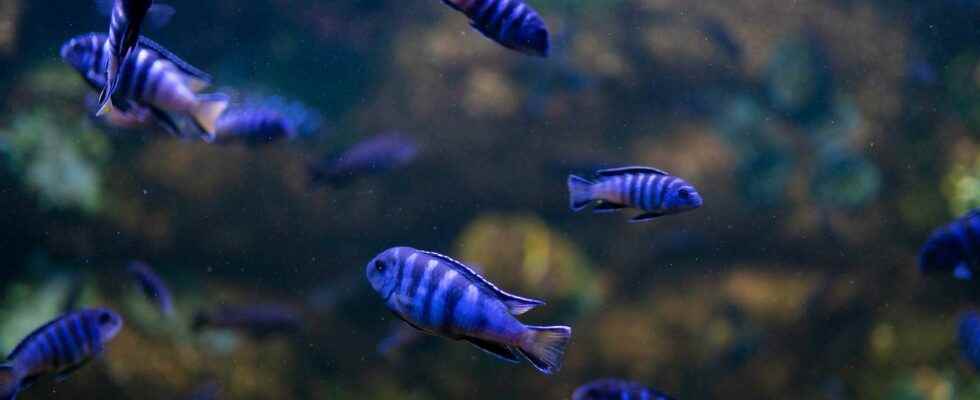You will also be interested
[EN VIDÉO] This fish holds its breath underwater! The boxfish does not breathe regularly with its gills but stores water in its cheeks without inhaling or exhaling for several minutes. A unique phenomenon in fish.
The zebra mbuna is a freshwater fish. It lives in Lake Malawi in east-central Africa. It is no more than ten centimeters long. It lives in colonies organized according to a well-established hierarchy. And, if it is harmless for us humans, it does not like, but then not at all, that an intruder seeks to spawn on its territory.
The stingray, she lives in the Atlantic Ocean and the Mediterranean Sea. Tail included, it can measure up to two meters fifty long. It is a solitary fish that likes to hide in the sand. And if you approach her, she might get scared and straighten the sting on her tail to sting you and inject you with a venom that can be deadly.
Presented like that, these two fish seem to have nothing in common. However…
Before going further, it seems important to clarify that researchers have known for some time that certain fish have the sense of numbers. They are not the only ones in this case, in the animal world. Far from there. This ability is present in all classes of vertebrates. And even in some invertebrates. Bees, for example. They are even capable of performing simple calculations.
What if bees — spiders also, it seems — know how to do it, so why not fish? This is the question that researchers have asked. And to answer it, they chose to work with… the zebra mbuna and the stingray. Because, in their sense of numbers, these two are surprisingly a lot alike to us. a shoteye to a small amount of coins on the ground and immediately they know how many there are. Probably without needing to actually count.
A surprising capacity
So the researchers wanted to know if they could train these fish in a short math game. Practice adding and subtracting. Very simple. Operations that consist in adding or removing only “one” from an initial quantity. And it worked !
How? ‘Or’ What ? By following the same protocol than the one that was used to show the calculating abilities of bees. The researchers presented geometric shapes to fish. With a code color : blue for addition and yellow for subtraction. So when the fish were presented with four blue squares, they then had to go to the group of five squares. That’s four plus one. With, of course, a gourmet reward at the end of the day.
To make sure the fish hadn’t simply associated the color blue with a greater amount, the researchers presented them with three blue squares with the option of then choosing between four or five squares. The fish made the right choice. Proving they hadn’t learned the rule “choose the largest — or the smallest – amount”but the rule “add — or subtract — one”.
The amazing thing is that the fish continued to be strong in calculation, even when the researchers presented them with objects of various shapes. Understand that a four could then very well be represented by a small and a large circle, by a square and by a triangle. The proof of a working memory incredibly efficient for these little beasts that don’t even have a Cerebral cortex. This part of the brain involved in complex cognitive tasks in mammals. And who do not a priori need to develop this kind of capacity in nature. One more proof that zebra mbuna and stingray… aren’t that stupid!
Support your independent scientific media: discover our subscription formulas!
4 good reasons to subscribe to Futura on Patreon:
- A site without any advertising from 3.29 euros per month.
- It is without commitment.
- Access to priority content, in preview, just for you.
- You support our business in the best possible way. A real motivation for us!
Interested in what you just read?
